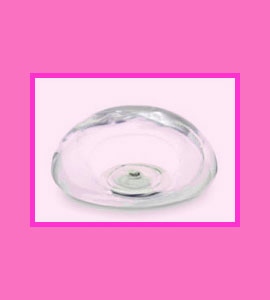
Breast implant design is an interesting specialty in the medical prosthetics and devices industry. Breast implants must be a practical combination of functionality, durability and aesthetic craftsmanship. Breast implants have remained relatively close to their original design, but time has certainly improved later generation implants in almost every conceivable way.
This essay detail each generation of implant construction and clarifies the differences in each design style.
Original Breast Implant Design
After much study on possible shell and filler materials, silicone was chosen as a logical choice for both applications. Silicone is inert and does not react with biological tissue. Best of all, silicone can be made into many forms including solids, gels and even liquids.
The original breast implants, developed by Dow Corning, had a thick outer shell made of silicone and a viscous interior silicone gel. This implant design was very durable, but some critics complained that it should be thinner shelled, softer and more lifelike.
Saline breast implants were also developed around the same time as early silicone implants. However, they were not very popular, despite some obvious surgical advantages.
Second Generation Implant Design
To accommodate popular requests, implant manufacturers began to thin out the outer shell and also change the interior filler to a less thick and more liquidy silicone filler.
Women seemed pleased with these changes and the popularity of breast augmentation began to skyrocket. Unfortunately, implants started to fail in large numbers, leading to the next generation of redesigns and a host of litigation and health advisories.
It was this second generation of implants which eventually led to the US banning of silicone prostheses, by the FDA, in 1992.
Third and Fourth Generation Breast Implant Design
Third and fourth generation silicone implants once again featured thicker and stronger outer shells and far thicker interior filler gel. These implants held up much better, but were still only available in areas outside the US or in very limited supply in the US and Canada.
During this time frame, the saline implant craze began and many doctors started to specialize in procedures using saline as their exclusive implant of choice. New types of incisions, such as the TUBA approach, were developed to take advantage of the benefits of implanting unfilled implant shells.
Fifth Generation Breast Implants
The newest generation of implants is the best ever. Silicone and saline are now both generally available and come in a wide range of sizes, shapes and profiles to meet the specific breast enlargement and breast reconstruction needs of almost every woman.
Silicone is now available in the newest model, the cohesive silicone gel implant. This implant is extremely durable and will not leak, even if the shell is compromised or pierced.
The latest saline breast implants are also better than before, featuring improved shapes and profiles which help increase their realism, when compared to previous implant generations.
Breast Implant Design Evolution
Cosmetic surgery is a highly specialized and profitable field which has created many incredible innovations within the medical industry. The quest for beauty is ever evolving and with today’s cosmetic procedures, beauty and perfection are within the means of almost everyone.
Look forward to many more future developments in the breast implant industry. Doctors and manufacturers are always trying to create a product which will set themselves apart from the pack. This friendly competition truly benefits all women considering cosmetic surgery, by providing them with an ever expanding set of options to create the look of their dreams.
We are sure that the future versions of breast implants will be designed even better than what is available now.



